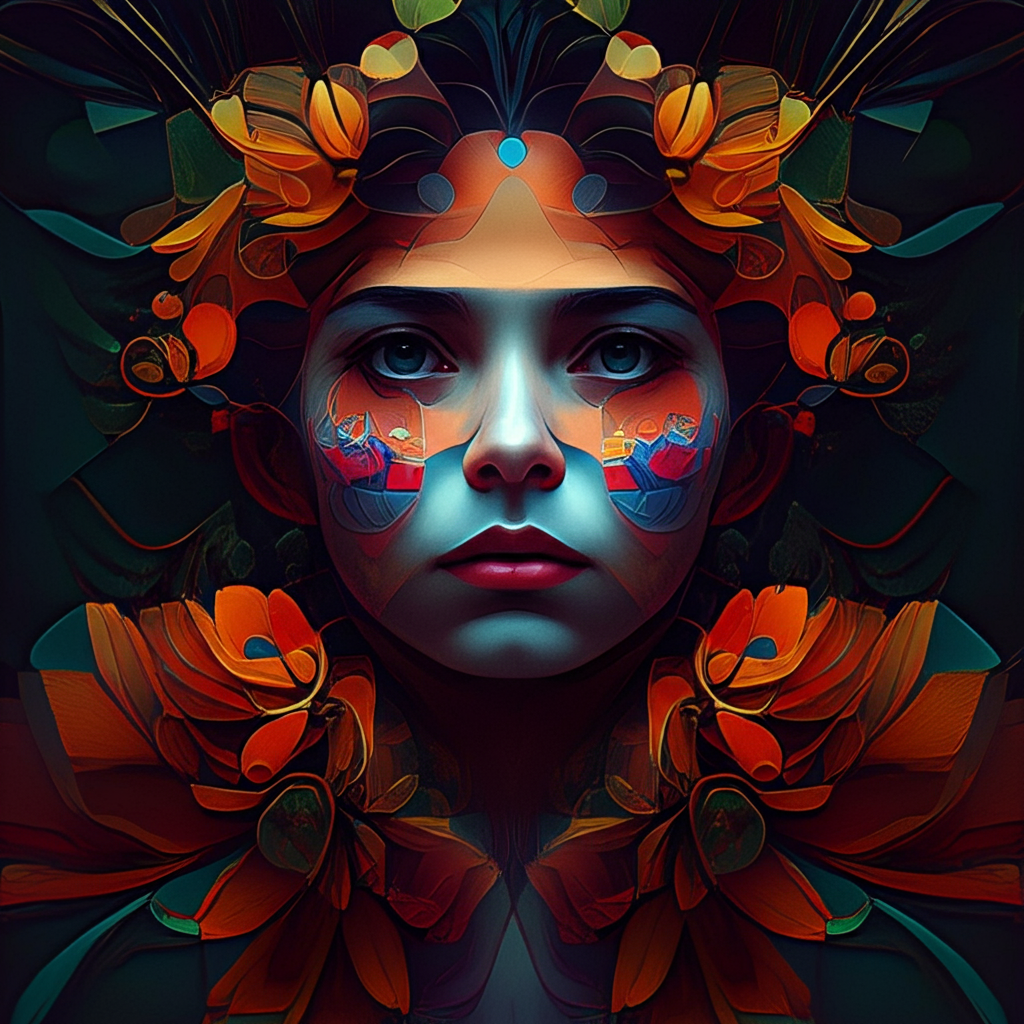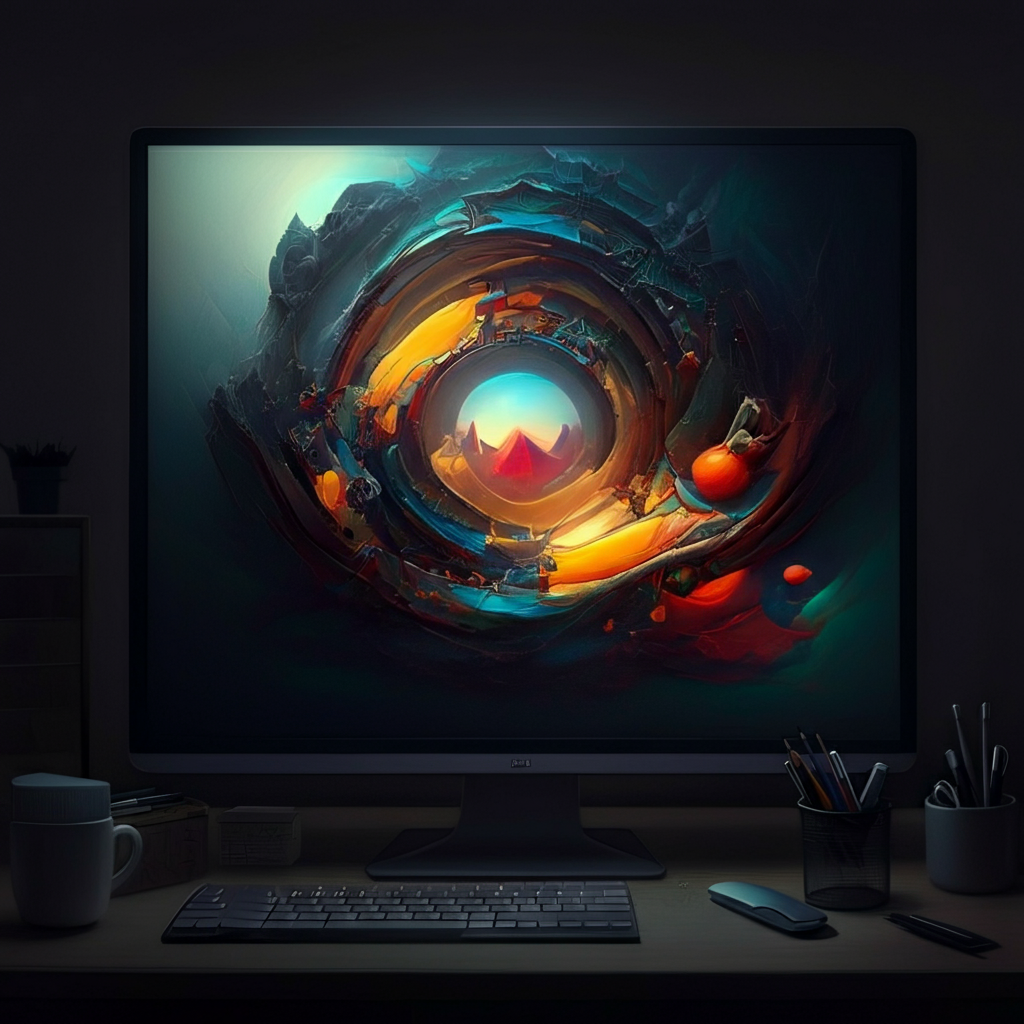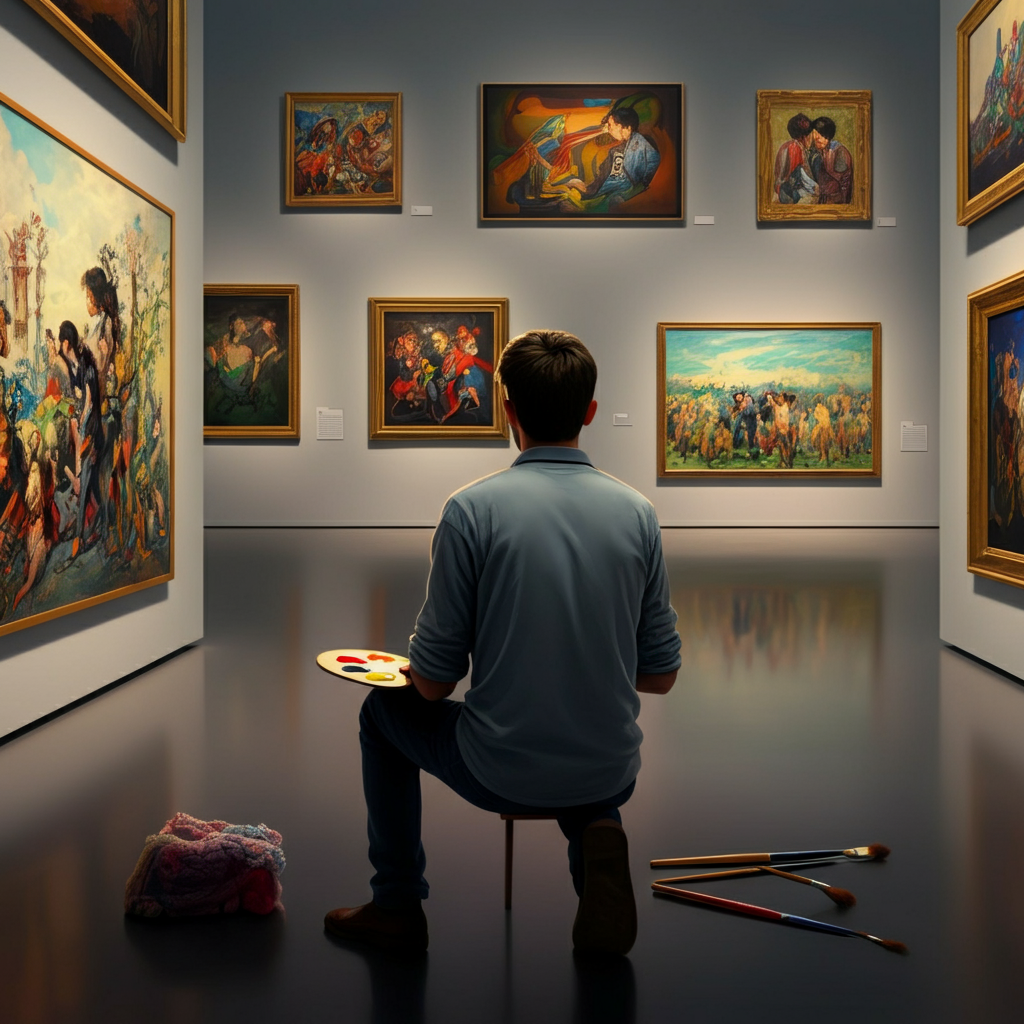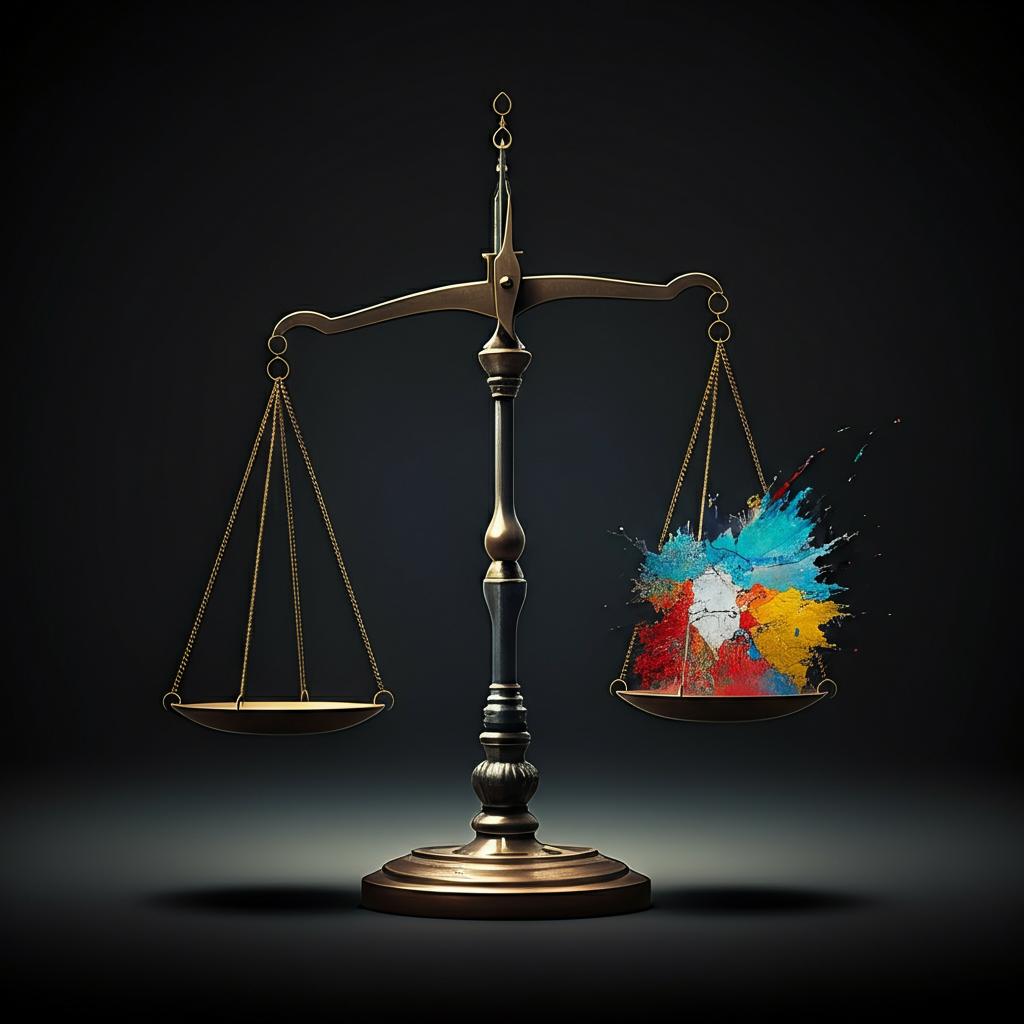Art and creativity have long been seen as deeply human endeavors, fueled by imagination, emotion, and the human experience. However, artificial intelligence (AI) is increasingly stepping onto this canvas, producing visuals, music, and written pieces that rival human-made creations. AI-generated content is revolutionizing creativity while raising ethical concerns about originality, copyright, and the future of artistic professions. While AI-generated art offers new possibilities, it raises critical questions about its place in creativity contests and its impact on the artistic community.
This article dives into recent controversies surrounding AI in art competitions, examines its implications, and explores how the line between human and machine creativity is being drawn.
The Rise of AI-Generated Art
AI art has gained massive attention in recent years, thanks to advancements in machine learning, particularly generative adversarial networks (GANs) like DALL·E, DeepArt, and MidJourney. These tools enable machines to produce artworks that mimic various styles and even create entirely novel ones.
AI Art: A New Movement or the End of Creativity?
The emergence of AI-generated art has sparked a heated debate in the art world, with some hailing it as a revolutionary new movement and others lamenting the potential demise of human creativity. As AI algorithms and models continue to advance, they are increasingly capable of producing high-quality, visually stunning artworks that rival those created by human artists. But what does this mean for the future of art and creativity?
On one hand, proponents argue that AI-generated art represents a groundbreaking shift in artistic expression. These advanced AI models can analyze vast datasets, learning from countless examples of human-created art to produce pieces that are both innovative and technically impressive. This new form of art challenges traditional boundaries and opens up exciting possibilities for what art can be.
On the other hand, critics worry that the rise of AI-generated art could undermine the value of human creativity. They argue that art is not just about the final product, but also about the human experience, emotions, and stories behind it. If machines can create art that is indistinguishable from human-made pieces, what happens to the unique value of human artists and their creative processes?
As the art world grapples with these questions, it is clear that AI-generated art is here to stay. Whether it is seen as a new movement or a threat to human creativity, it is undoubtedly reshaping the landscape of artistic expression.
Examples of AI in Competitions
Winning Pieces in Major ContestsAI-generated works have entered and, in some cases, won prestigious art competitions. For example, in 2022, a digital artwork created using an AI platform stirred debate when it secured first place in a state-level art contest in the U.S.
Blurring Creative BoundariesAI doesn’t just generate visual art; it can produce poetry, music, and even scripts. Though these efforts are remarkable, they also challenge traditional notions of creativity. Participants often evaluate computer-generated art differently, with biases against AI art influenced by aesthetic judgments. Studies suggest that aspects such as effort and embodiment play a role in the appreciation of computer-generated art, and viewers may respond more positively to anthropomorphized representations of AI when judging the quality of the artwork.

The Creative Process and AI
The creative process is a complex and multifaceted phenomenon that has long been the exclusive domain of human artists. However, with the advent of AI tools and models, the boundaries between human and machine creativity are becoming increasingly blurred. AI algorithms can now analyze vast amounts of data, recognize patterns, and generate new ideas, raising questions about the role of human creativity in the artistic process.
Traditionally, the creative process involves a deep connection between the artist and their work, driven by personal experiences, emotions, and intuition. Human artists draw inspiration from their surroundings, their inner thoughts, and their unique perspectives. This deeply personal aspect of art is what has always set human creativity apart.
However, AI tools are changing this dynamic. These advanced algorithms can process and analyze enormous datasets, identifying patterns and generating new concepts that might not be immediately apparent to human artists. For instance, AI can suggest novel color combinations, innovative compositions, or even entirely new artistic styles. This can serve as a source of inspiration for human artists, pushing the boundaries of their creativity.
Yet, this raises important questions: Can a machine truly be creative? Or is it merely mimicking creativity based on the data it has been fed? While AI can generate impressive artworks, it lacks the emotional depth and personal experiences that drive human creativity. As AI continues to evolve, the interplay between human and machine creativity will likely become a central theme in the art world.
How AI Creates Art
AI-generated art is created using a range of techniques, including neural networks, deep learning, and machine learning. These algorithms can be trained on vast datasets of existing artworks, allowing them to learn patterns, styles, and techniques that can be used to generate new art. AI models can also be used to create entirely new forms of art, such as generative music and poetry.
At the heart of AI-generated art are neural networks, which are designed to mimic the way the human brain processes information. These networks consist of layers of interconnected nodes, each of which processes a small piece of the overall puzzle. By training these networks on large datasets of existing art, they can learn to recognize and replicate various artistic styles and techniques.
Deep learning, a subset of machine learning, takes this a step further by using multiple layers of neural networks to analyze and generate art. This allows AI models to create highly detailed and complex artworks that can rival those created by human artists. For example, generative adversarial networks (GANs) use two neural networks in tandem – one to generate art and the other to evaluate it – to produce increasingly refined and realistic pieces.
These AI models are not limited to visual art. They can also be used to create generative music, poetry, and other forms of artistic expression. By analyzing patterns in existing works, AI can generate new compositions that push the boundaries of traditional art forms. This opens up exciting possibilities for the future of art, as AI continues to evolve and expand its creative capabilities.
AI-Generated Art and the Art Market
The rise of AI-generated art has significant implications for the art market, with many wondering whether human-created art will become obsolete. However, others argue that AI-generated art will simply create new opportunities for human artists, allowing them to focus on higher-level creative tasks and collaborate with machines to produce innovative new works.
AI-generated art is already making waves in the art market, with some pieces fetching high prices at auctions and exhibitions. This has led to a growing interest in AI-created art among collectors and investors, who see it as a novel and potentially lucrative addition to their portfolios. The unique nature of AI-generated art, combined with its ability to push the boundaries of traditional artistic expression, makes it an attractive option for those looking to invest in the future of art.
However, the rise of AI-generated art also raises concerns about the potential devaluation of human-created art. As machines become more capable of producing high-quality artworks at a lower cost, there is a risk that human artists may struggle to compete. This could lead to a shift in the way that art is valued and sold, with AI-generated pieces becoming more prevalent and human-created works potentially losing their unique appeal.
Despite these concerns, many believe that AI-generated art will ultimately create new opportunities for human artists. By automating certain aspects of the creative process, AI tools can free up artists to focus on higher-level creative tasks, such as conceptualizing new ideas and exploring innovative techniques. This collaboration between human and machine could lead to a new era of artistic expression, where AI-generated art and human-created art coexist and complement each other.
The Impact on Sales and Market Value
The impact of AI-generated art on sales and market value is still unclear, but it is likely to be significant. As AI-generated art becomes more prevalent, it may lead to a shift in the way that art is valued and sold. Some argue that AI-generated art will democratize the art market, making it more accessible to a wider range of people. Others worry that it will lead to a devaluation of human-created art, as machines are able to produce high-quality artworks at a lower cost.
One potential benefit of AI-generated art is its ability to democratize the art market. By making high-quality art more accessible and affordable, AI-generated pieces could open up new opportunities for a wider range of people to engage with and appreciate art. This could lead to a more inclusive and diverse art market, where a broader spectrum of voices and perspectives are represented.
However, there are also concerns that the rise of AI-generated art could lead to a devaluation of human-created art. As machines become more capable of producing impressive artworks, there is a risk that the unique value of human creativity may be diminished. This could have significant implications for the art market, as collectors and investors may begin to favor AI-generated pieces over human-created works.
In conclusion, the emergence of AI-generated art raises important questions about the future of creativity, the role of human artists, and the impact on the art market. While some see AI-generated art as a threat to human creativity, others view it as an opportunity for innovation and collaboration. As the art world continues to evolve, it is likely that we will see a blend of human and machine creativity, with AI tools and models augmenting and enhancing the creative process.
Controversies in AI Art Competitions
The use of AI in creativity contests has sparked fierce debates among artists, judges, and audiences alike. AI is transforming the art creation process, enhancing accessibility for artists with disabilities, and rapidly evolving the capabilities of artistic output. However, it also raises ethical concerns about authenticity and originality in creative works.
The Main Points of Contention
Fairness in Competitions
Many argue that placing AI-generated pieces alongside human-made works is unfair since AI does not possess the human backstory, thought process, or emotional investment traditionally valued in art.Originality and Ownership
Questions arise about who owns the rights to AI-generated art and whether these works can truly be considered “original” if they rely on datasets sourced from human-made creations.Transparency Issues
Some competitions do not mandate disclosure of AI involvement, leading to concerns about misleading judges and audiences.
Image 2 Placement: Add an image of an AI-powered system generating digital art in progress, representing the role of algorithms in artistic creation.

The Impact on Artists and the Creative Community
While some see AI as a threat to human creativity, others regard it as a tool for artistic exploration.
Challenges for Artists
Devaluation of Human EffortMany artists feel that AI-generated works commodify creativity, potentially undermining the value of human artistry.
Employment and OpportunitiesIncreased reliance on AI in design and art could limit opportunities for human artists, especially in commercial settings. However, art education is integrating AI into creative practices, preparing students with both traditional and modern techniques for an AI-centric landscape.
Bias in Training DataAI models are trained on large datasets, which may carry biases. Artists argue that this risks perpetuating stereotypes or favoring certain styles over others.
Opportunities for Collaboration
AI as a ToolDespite criticism, some artists use AI to amplify their creative process, combining machine-generated ideas with their own vision.
Expanding Artistic HorizonsAI enables creators to experiment with styles, mediums, and techniques that were previously impossible, opening up new dimensions of creativity. Generative AI tools are used to create a variety of outputs, like recipes and illustrations, by simply inputting requests in plain English. These tools have a transformative impact on creativity, allowing for innovative and commercially appealing outputs, despite some current limitations in quality and realism.

Ethical and Philosophical Questions
Beyond practical implications, AI-generated art raises profound ethical and philosophical questions.
Is Creativity a Uniquely Human Trait?
AI lacks emotions, experiences, and perceptions, yet it produces art that can evoke profound reactions. This blurs the line between what is considered human and machine creativity.
Accountability and Authorship
When an AI system generates art, who is credited? The programmer? The dataset contributors? This dilemma further complicates the relationship between humans and machines. The ownership and originality of AI-generated content raise significant ethical concerns, as artists face legal challenges against AI models that utilize their work without consent.
Should AI Have Creative Limits?
Some argue that regulations are needed to limit AI’s role in art contests to preserve space for human creativity. The role of AI in art creation raises important questions about the need for regulations to ensure that human creativity remains central. Others believe innovation should know no boundaries.
Possible Solutions and Moving Forward

Striking a balance between AI and human creativity is essential as AI becomes increasingly integrated into artistic pursuits.
Proposed Solutions
Creating Separate CategoriesIntroducing “AI-assisted” or “AI-generated” categories in competitions can ensure fairness while fostering innovation.
Transparency RequirementsRequiring entrants to disclose AI involvement fully helps maintain trust in the competition process.
Guidelines for Ethical AI UsageEstablishing codes of conduct for training datasets and AI usage could address concerns about bias and ownership. Additionally, art education can prepare students for an AI-centric landscape by integrating both traditional and modern techniques, including the ethical implications and evolving nature of art in a digital context.
Looking Ahead
The growing role of AI in art is both exciting and challenging. While AI offers new creative opportunities, it also forces the art world to re-evaluate its traditional values and practices. By creating fair policies and fostering understanding, we can ensure that AI becomes a partner in creativity rather than a competitor.
AI-created works are here to stay, and it’s up to us to decide how they coexist with human artistry. The goal should not be about drawing a hard line but finding a space where both human expression and machine innovation can thrive.
